Lofoten Luminance – My own photography paradise
Hi Robert! Can you please start by introducing yourself to our readers?
My name is Robert Andrelczyk, I am a little over 40 years old, I was born in Poland and have been living in Norway for 16 years. I have a wife, three sons, a dog, a cat, a dozen hens, and a few ducks (yes, you read that correctly!). I worked as a project manager in one of Norway’s largest construction companies, and my wife is a teacher. For the first 12 years, we lived in Trondheim, in central Norway, and then we decided to change something in our lives. There was an idea to return to Poland, but we have always dreamed of the land of the north, so there could only be one choice… As an outdoor family that spends a lot of time in nature, after a few days of thinking, we decided that Lofoten would be our haven! And all this thanks to a camping trip a few years earlier…
Also, since 2019, we are the happiest inhabitants under the sun of the Lofoten archipelago, our island is Vestvågøy. I can confirm that the islands are magical, because whoever comes here once wants more and more, and we managed to live here.
In addition to photography, I love music (I play on trumpet), hiking, trekking with our dog and, of course, camping trips with the kids.


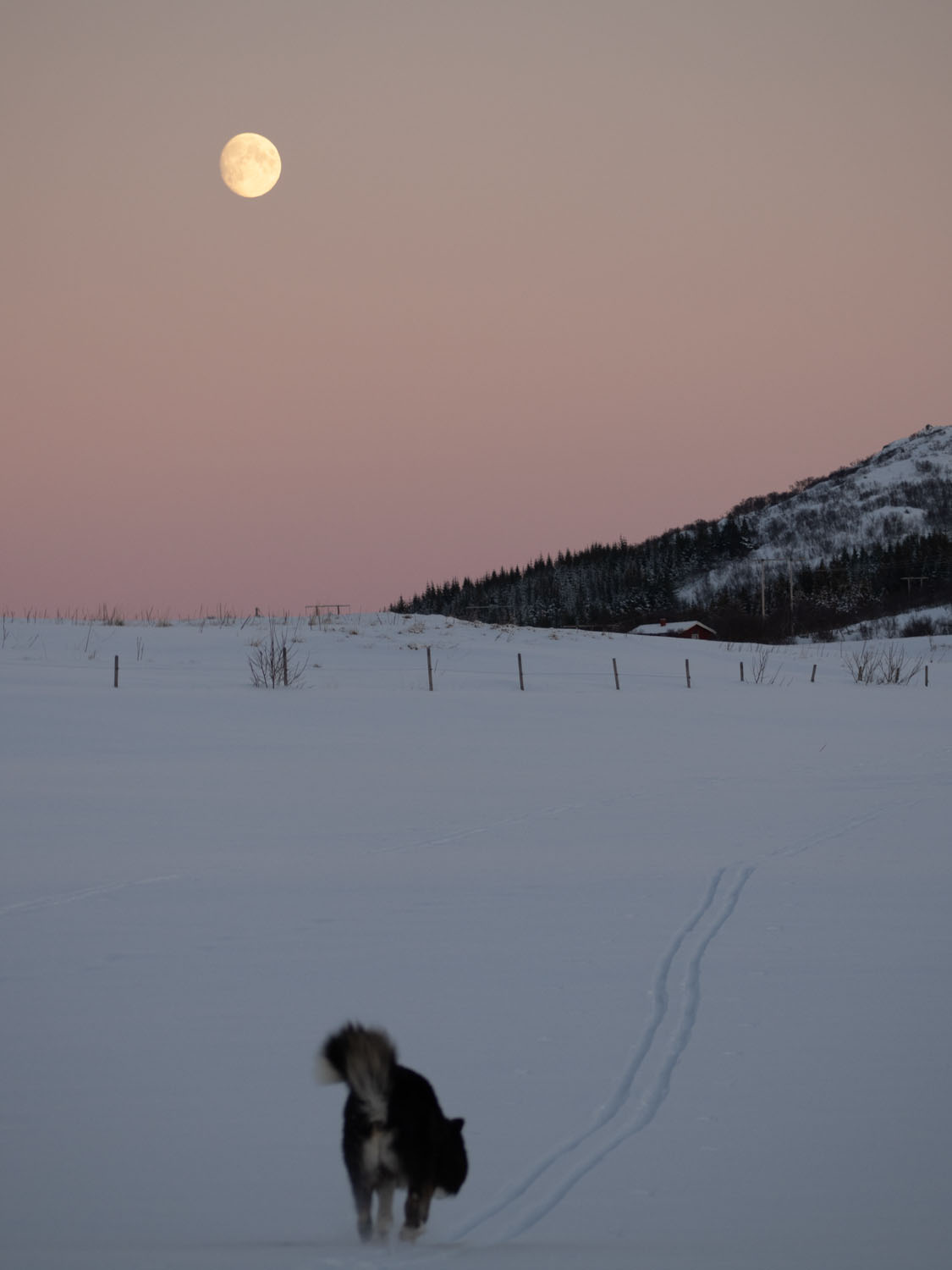
RIGHT: Olympus OM-1 . Olympus M.Zuiko 100-400mmF5.0-6.3 @100mm . F/5.0 . 1/200” . ISO 320
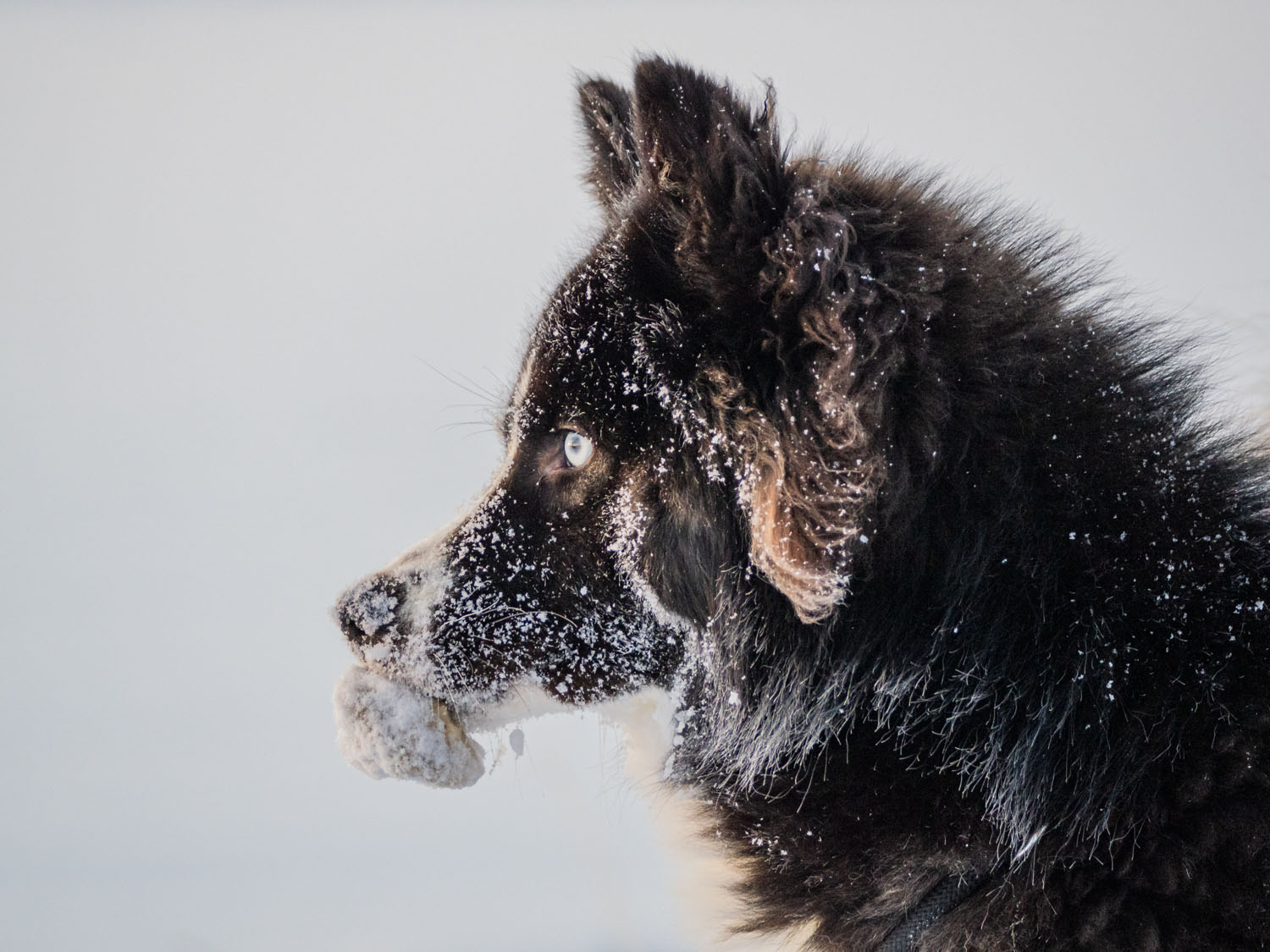
Are you aware that Lofoten, Norway, is one of the top 5 destinations photographers dream of visiting? How is life there on a regular basis, beyond its picturesque scenery? We understand it’s a paradise wherever you look, but what is day-to-day living like?
Of course I know! In fact, probably everyone already knows 🙂 Lofoten is like a pearl of a thousand islands, its location makes the islands’ climate feel here all year round. The crystal clear water, which changes its colours thanks to sea algae, turns turquoise, the beaches look like those from Pirates of the Caribbean, and the soaring mountain peaks and jagged ridges look phenomenal, I have the impression that sometimes they shoot straight out of the sea.
Charming fishing houses (rorbuer), stockfish – wind-dried cod flowing around Lofoten and all the villages and photo points known from the media – that’s why it’s an absolute “must be” for every photographer.
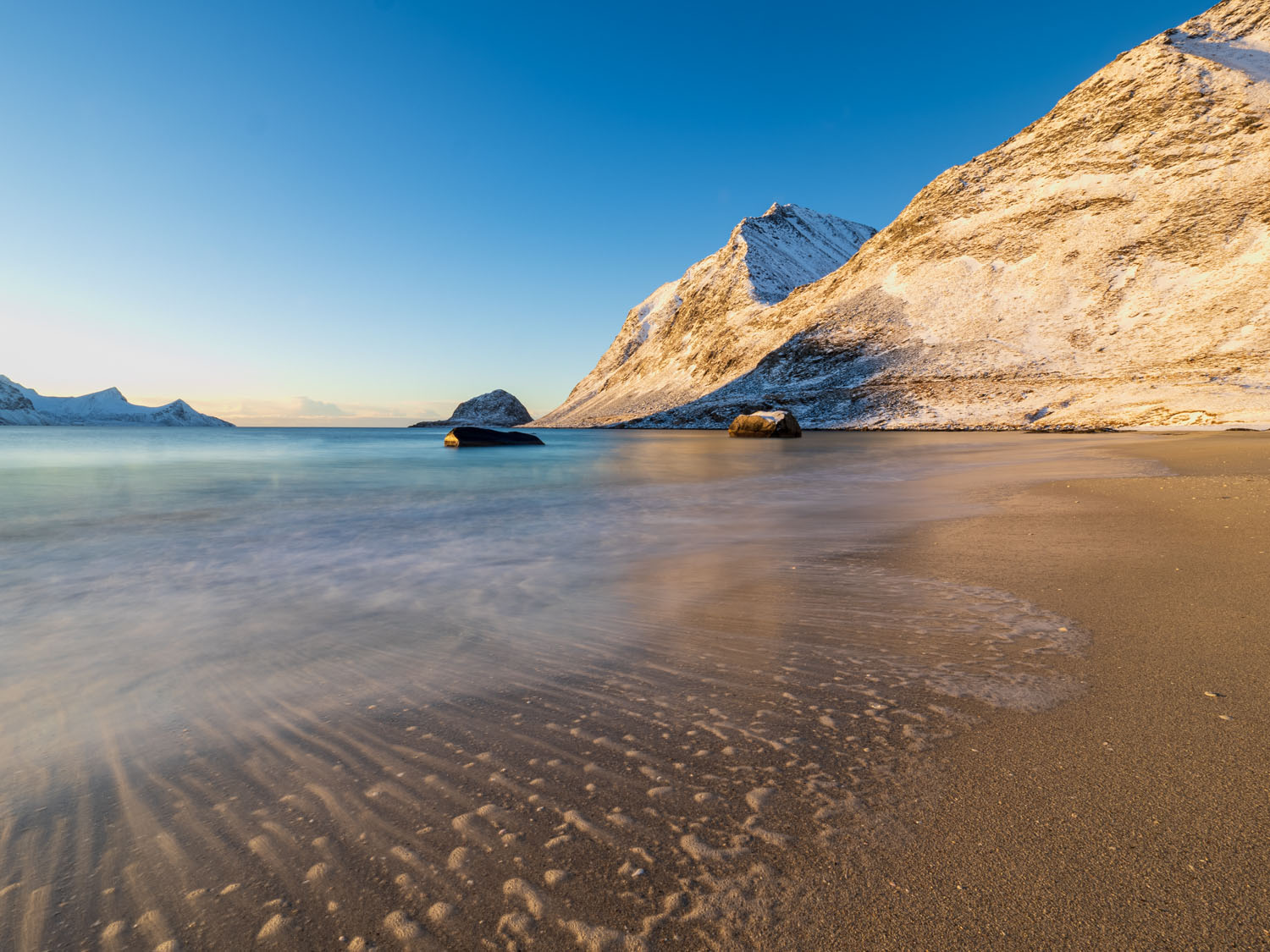

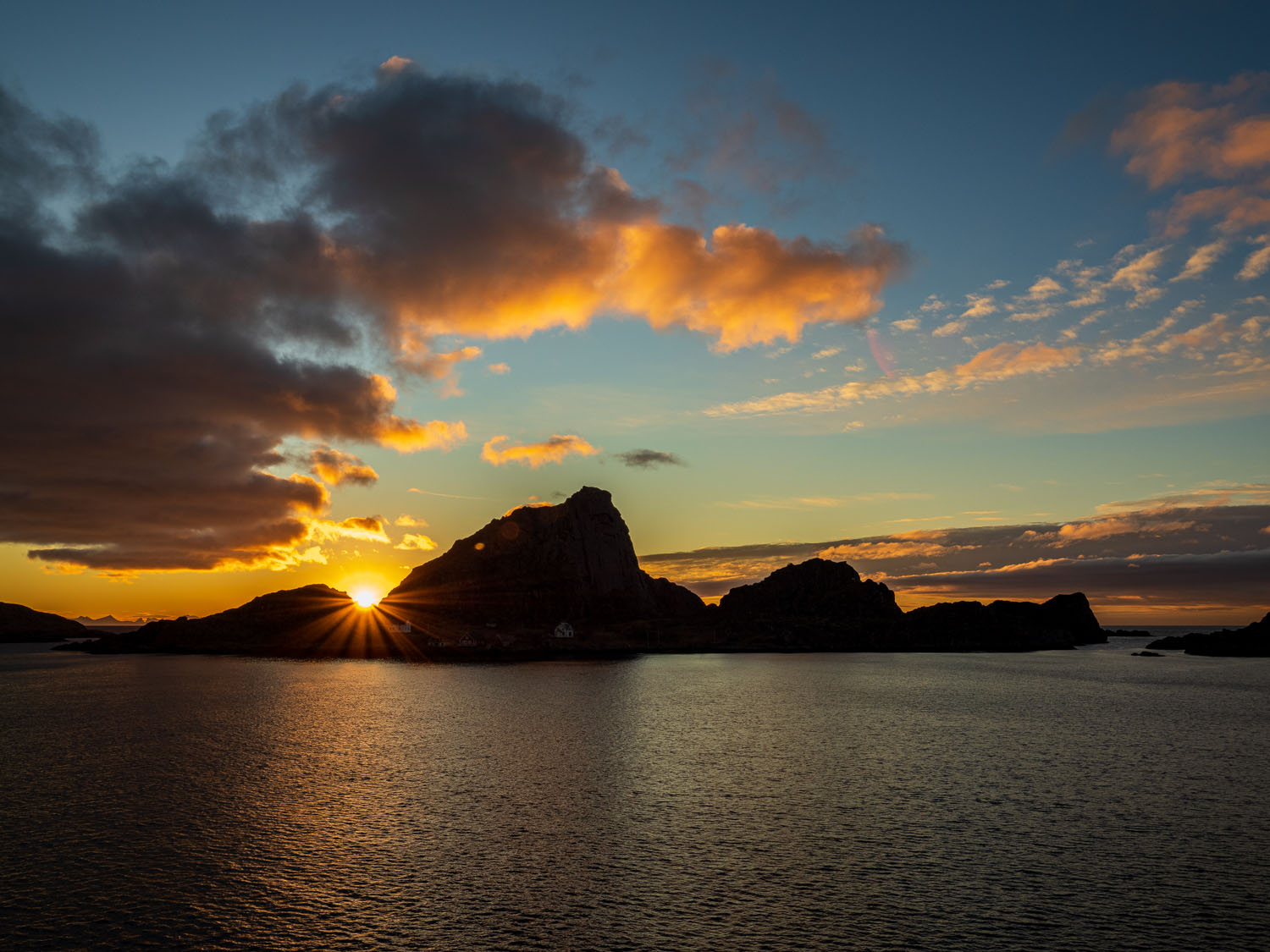
RIGHT: Olympus OM-1 . Olympus M.Zuiko 7-14mmF2.8 @14mm . F/8 . 1/100” . ISO 200


RIGHT: Olympus OM-1 . Olympus M.Zuiko 12-40mmF2.8 @28mm . F/8 . 15” . ISO 400
However, despite all the wonderful photos published in the media, living in Lofoten all year round is not easy. Strong and cold wind, storms, rains that can fall for a whole month or the polar night make everyday matters very difficult. No one will see this in the pictures. In winter, it often snows, and after a while it rains, ice forms cover the roads, which makes it very difficult to move around the islands. During strong winds, all ferries, and air fly connections are cancelled, and roads may be impassable. You can’t work outside, in the garden, go out with the kids, take pictures or go for a walk with the dog.
Fishing, farm work and transport have a hard time then.
For some people very depressed can be a dark time, no sunshines and sunrises make unnatural bad mood and shape, so here we need to be creative and find something to get us out from darkness, like books, family games, homework, nice candles indoors and everything will be fine 🙂
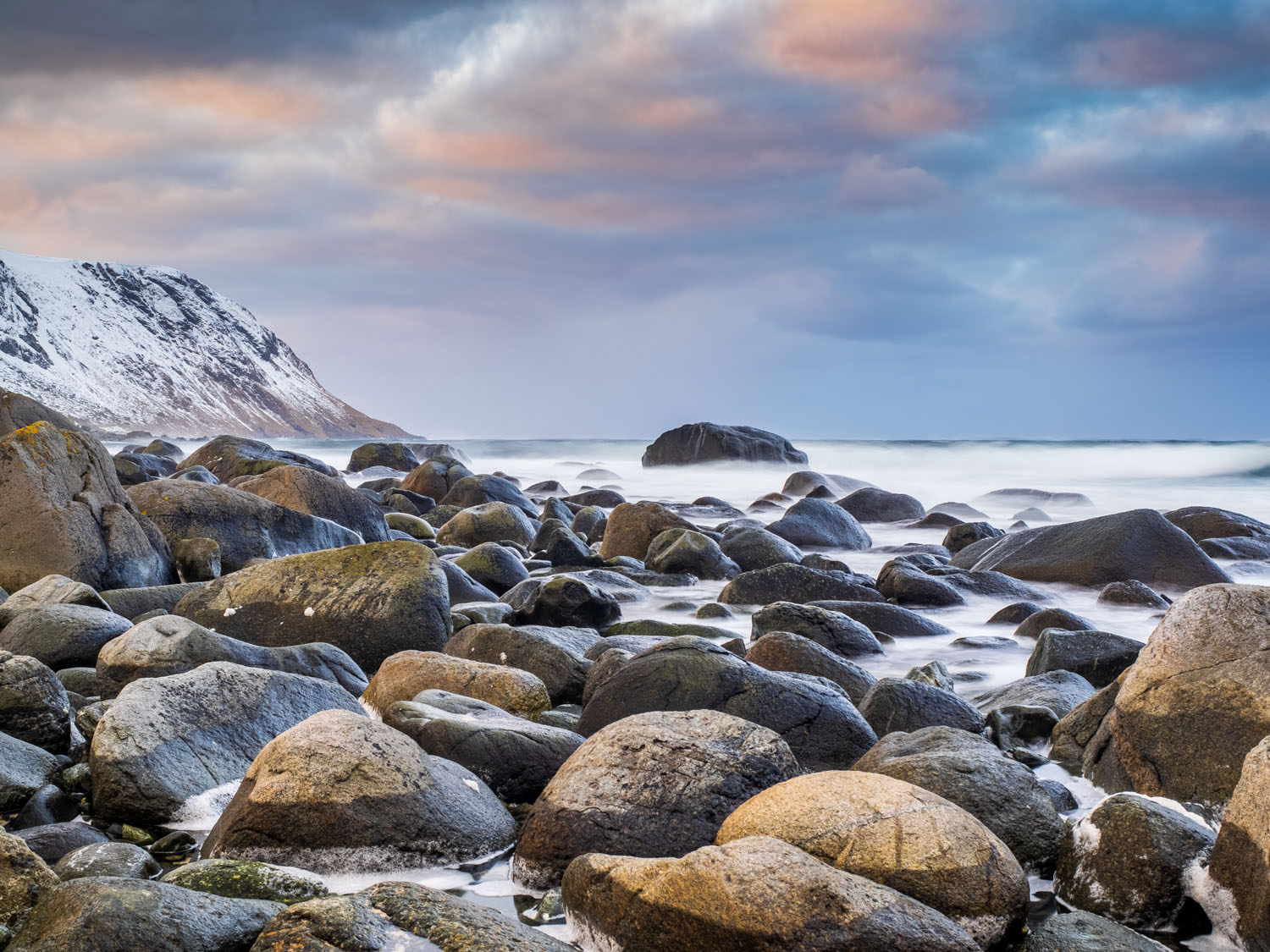
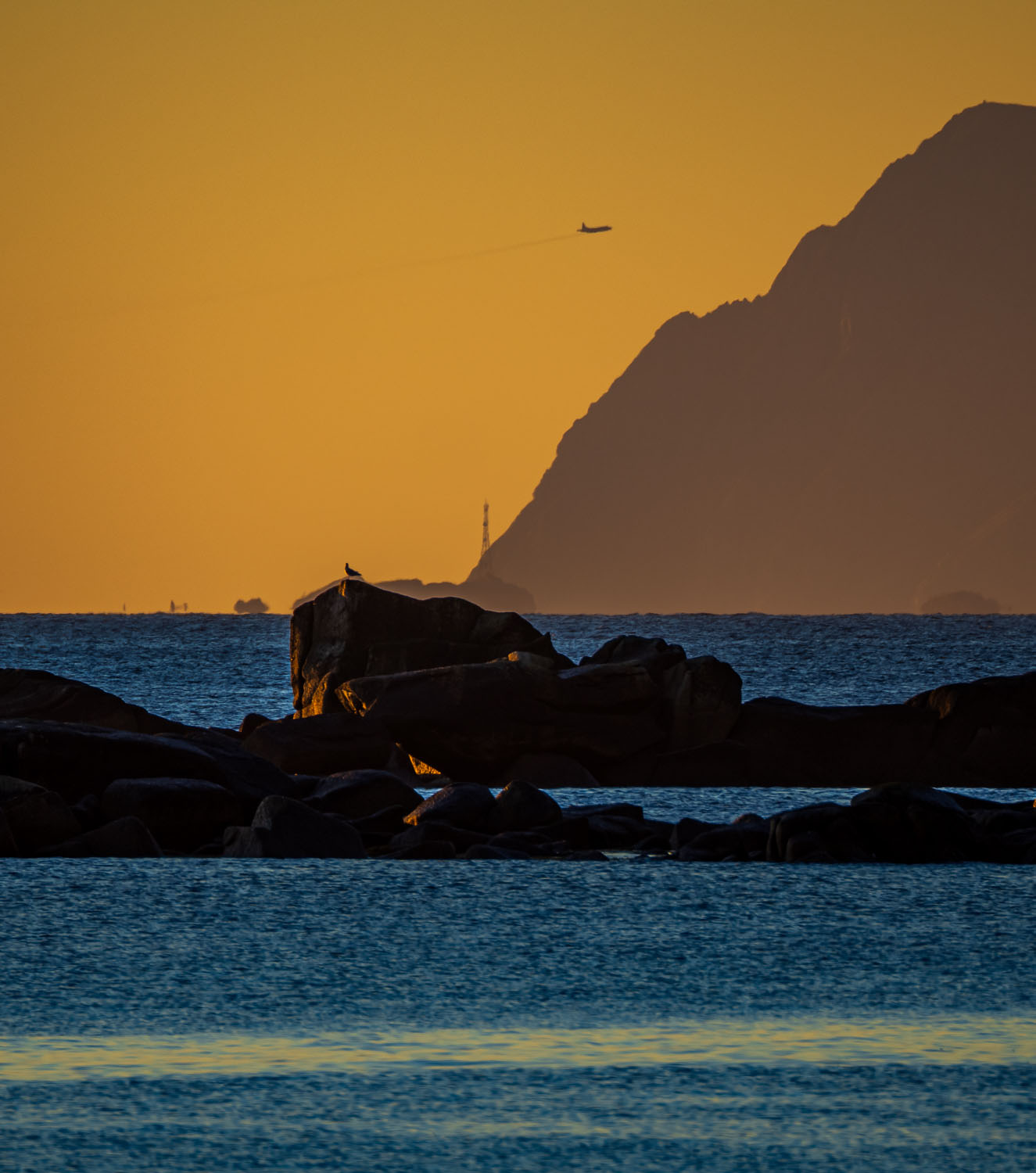

RIGHT: Olympus OM-1 . Olympus M.Zuiko 12-40mmF2.8 @12mm . F/9 . 1/4” . ISO 200

This is due to the climate and geographical location – the islands are not sheltered and therefore are often exposed to difficult weather conditions.
Remember, it’s not the end of the world. I live here, and I’m fine!
Would I trade this place for another? NO. It could only rain less.
On the other hand, when the weather finally improves, we have all the treasures of Lofoten at our fingertips, for example, a 10-minute drive to Haukland beach – that’s it! You understand: you are walking with your dog on the most beautiful beach in Europe, and there is NO ONE else except you and the dog. The trails are empty in the off-season, and the beaches are sometimes as if undiscovered and deserted. And I (or we) are with this wonderful nature on my own, I love listening to the waves bouncing off the mountains, feeling the sea wind, and just being there.
On days like this, Lofoten people are outside, always. Because we remember these days best. We also remember sunny polar days, when the sun does not hide behind the horizon, starry sky with a full Moon or the aurora borealis. We no longer think that the storm damaged our tree (what?) or closed the roads, we use the weather, because I don’t know if you know, but summer in Lofoten can happen only one day LOL. A joke from Lofoten.
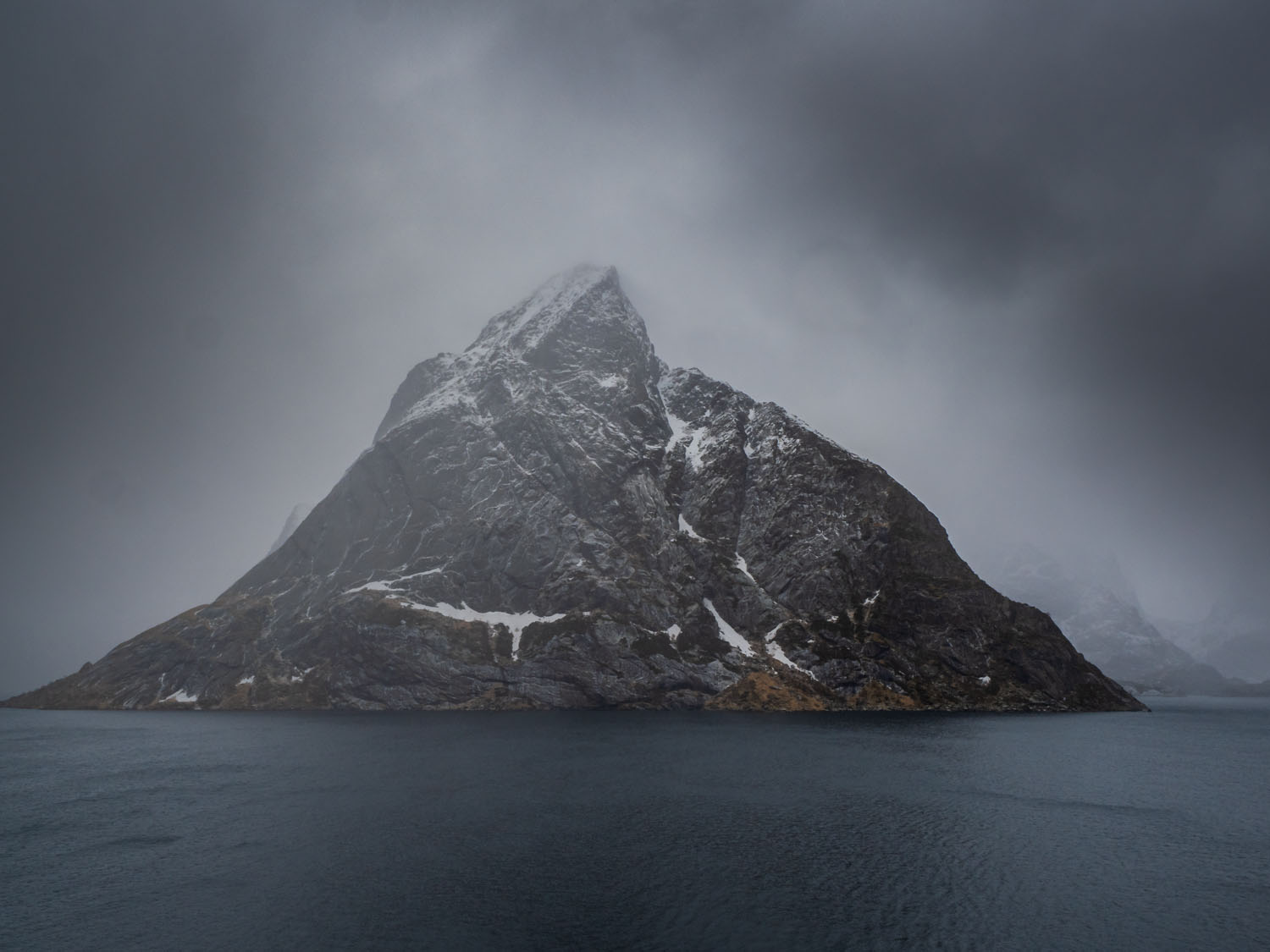


RIGHT: Olympus E-M1 MK II . Olympus M.Zuiko 100-400mmF5.0-6.3 @100mm . F/13 . 1/400” . ISO 1600
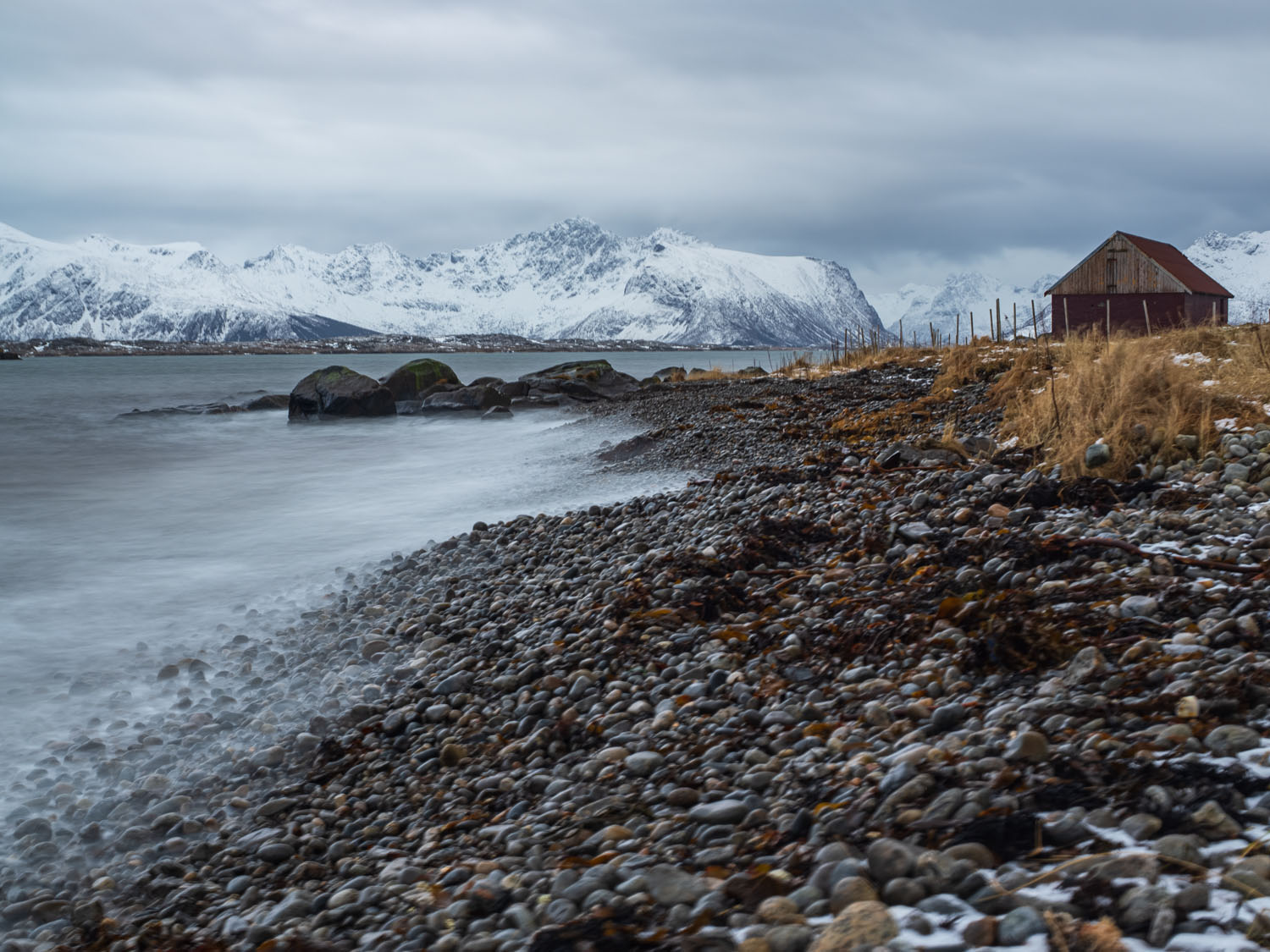
It’s clear that your love for the great outdoors, including hiking and camping, is a natural part of who you are. Your photos show that you truly embrace every moment and season, fully immersing yourself in the beauty of nature. Isn’t that right?
It’s definitely true! Hiking and camping is something my parents taught me, so it cannot be otherwise that, either alone or with my family, this is how I spend most of my time.
Rush, work, and for example quick access to social media make it easy for us to put down our roots while sitting on the sofa scrolling through the phone or tablet. We easily and quickly forget that there is something else – nature. Nature doesn’t need people, but people need it more than they think. Creativity, especially in landscape photography, begins and ends in nature, its beauty, freedom, subjects and harmony.
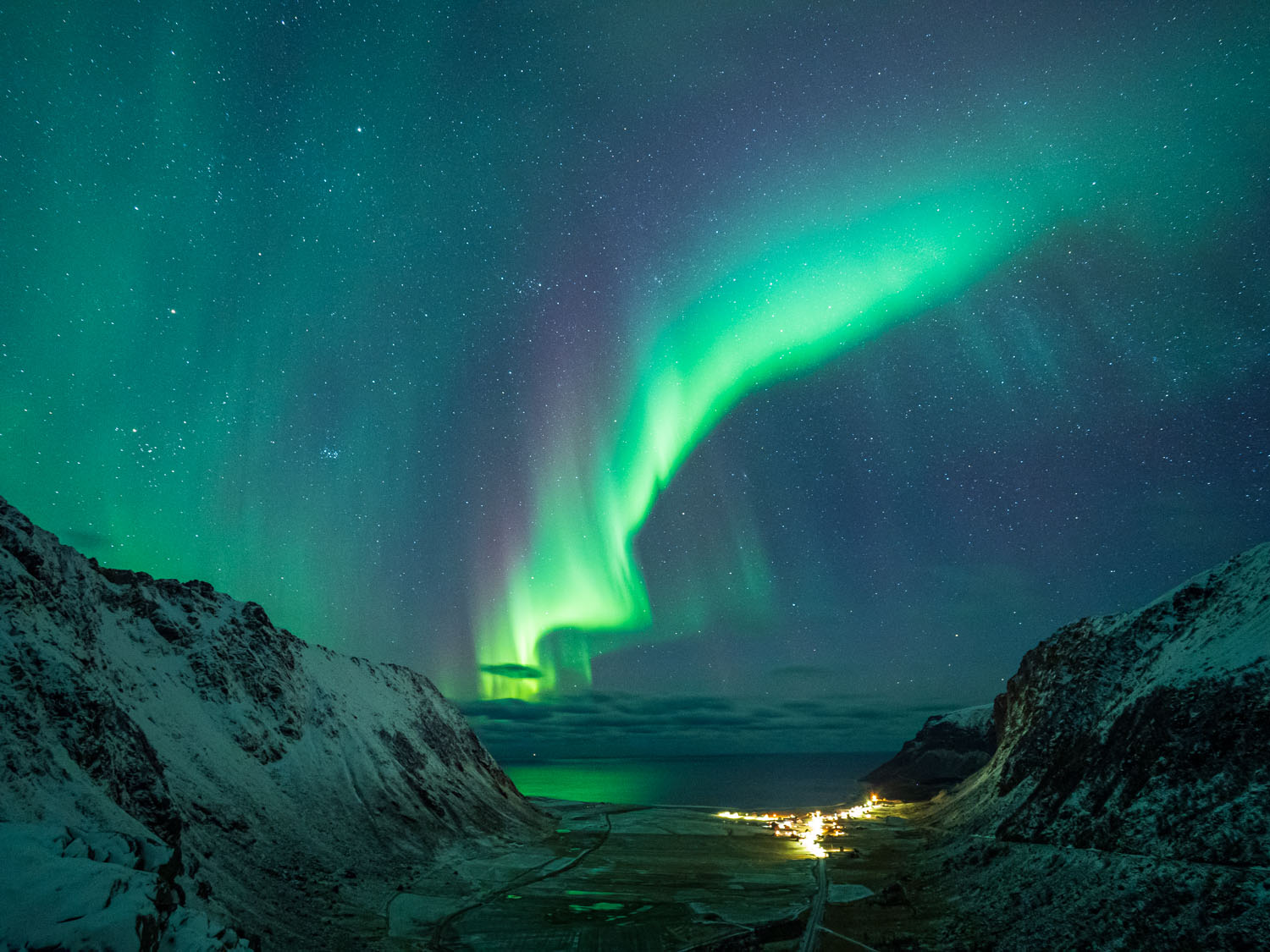
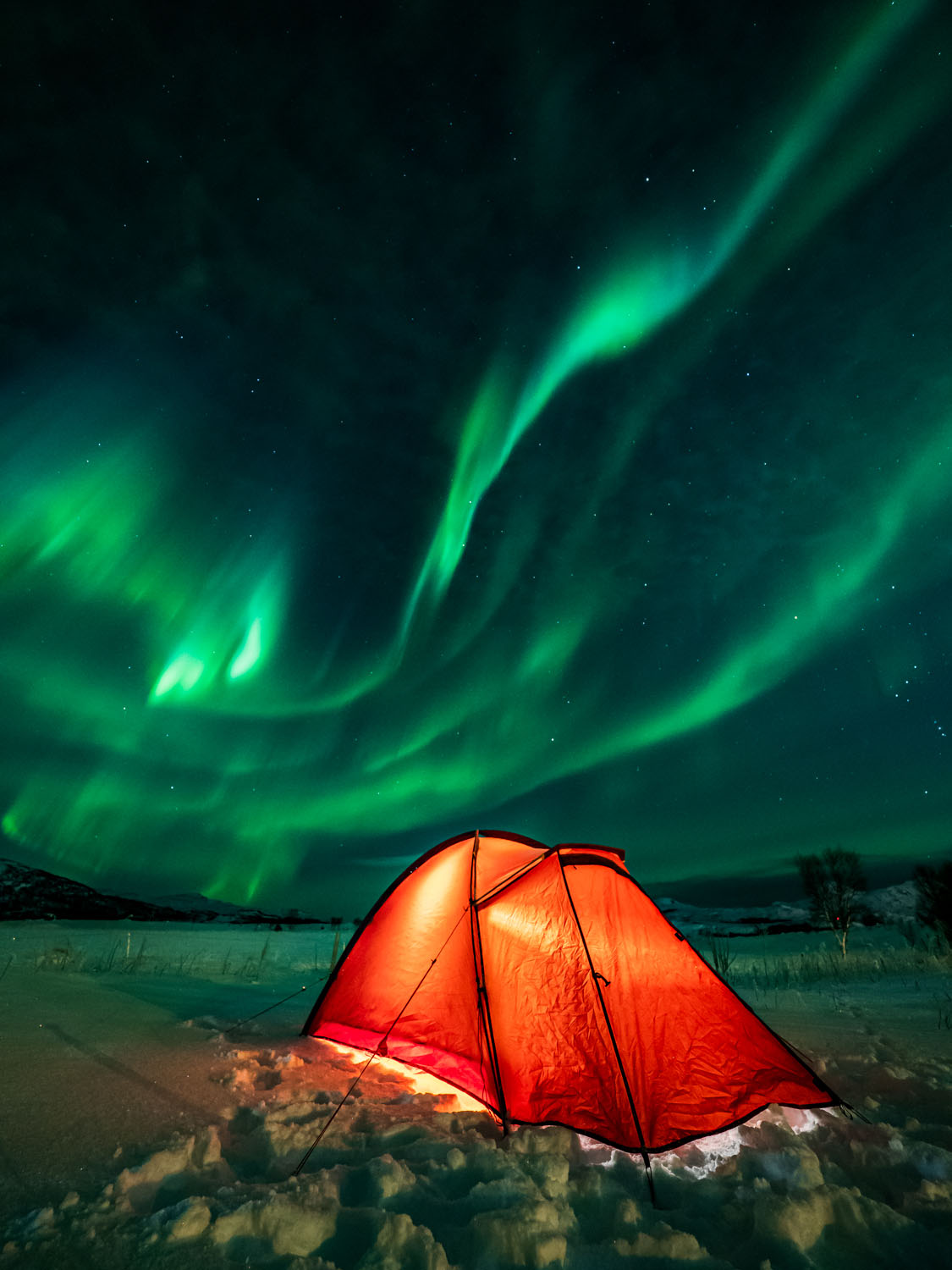

RIGHT: Olympus OM-1 . Olympus M.Zuiko 7-14mmF2.8 @8mm . F/2.8 . 8.0” . ISO 1000

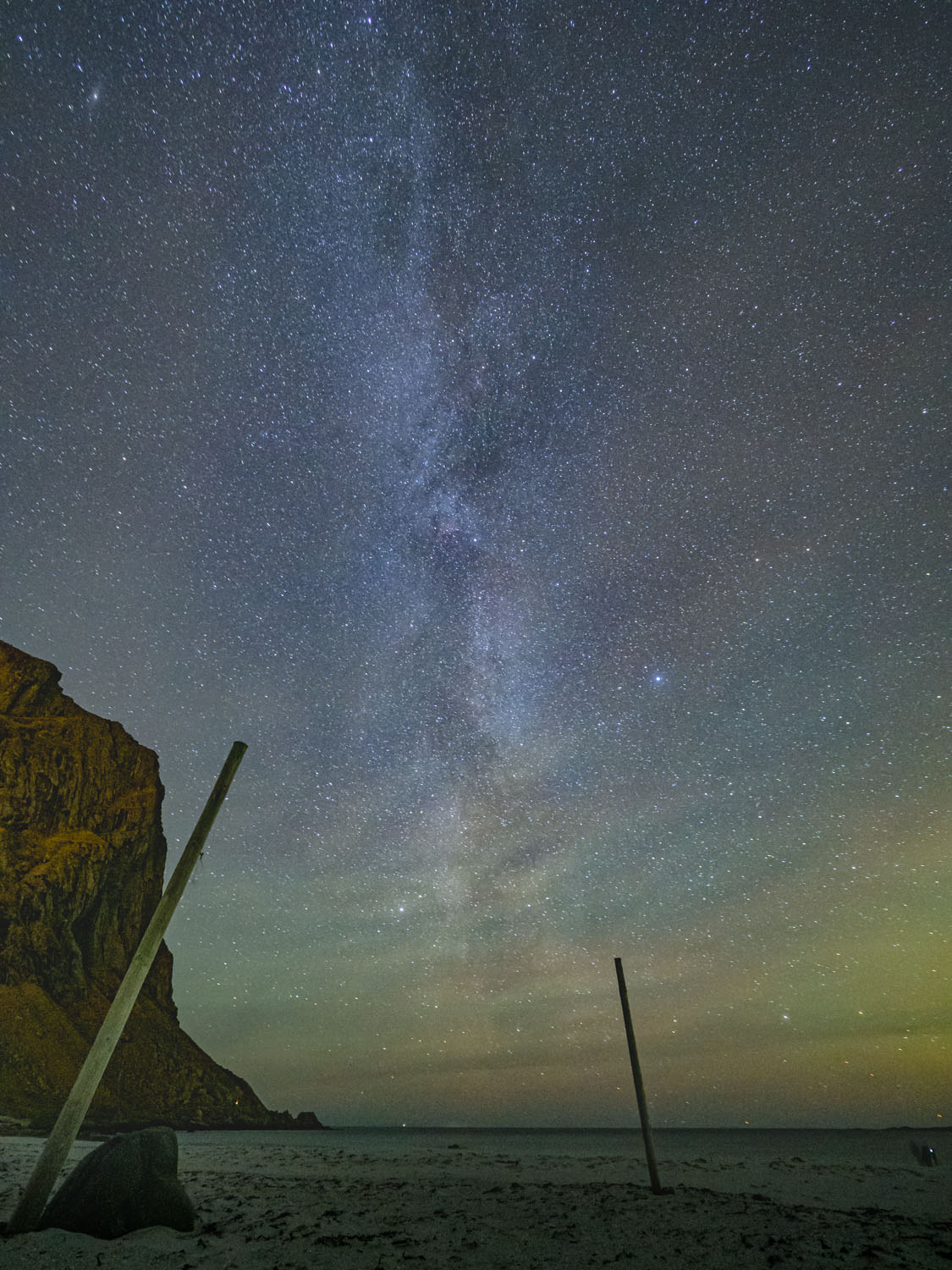
RIGHT: Olympus OM-1 . Olympus M.Zuiko 7-14mmF2.8 @7mm . F/2.8 . 40” . ISO 4000
Paintings and photographs show this world in its most natural form: monumental mountains, menacing waves crashing the rocks, forests untouched by us, the colours of the seasons and weather phenomena such as strong storms or northern lights. Grey and sad colours of late winter, frames devoid of sunlight, on the other hand, thousands of colours of autumn, shimmering with the sun, leaves swaying from the sea wind, and the water taking on amazing shades.
The landscape on the islands is combined with man-made infrastructure, famous rorbu and fishing villages, yellow and red houses become the motifs and subjects of many beautiful photos.
This is all I have all year round and at any time of the day or night. And that’s what my photography shows – Lofoten in known and completely unknown places in rain, snow, storm, night and polar day, with millions of stars in the sky and different phases and colours of the Moon. Old and abandoned houses, and of course, the northern lights. To this day, I am very impressed by this phenomenon, super-terrestrial, as if not from this planet. Did you know that it even shines over our tiny wooden house? Wonderful!
To the point – I’m falling in love with nature.
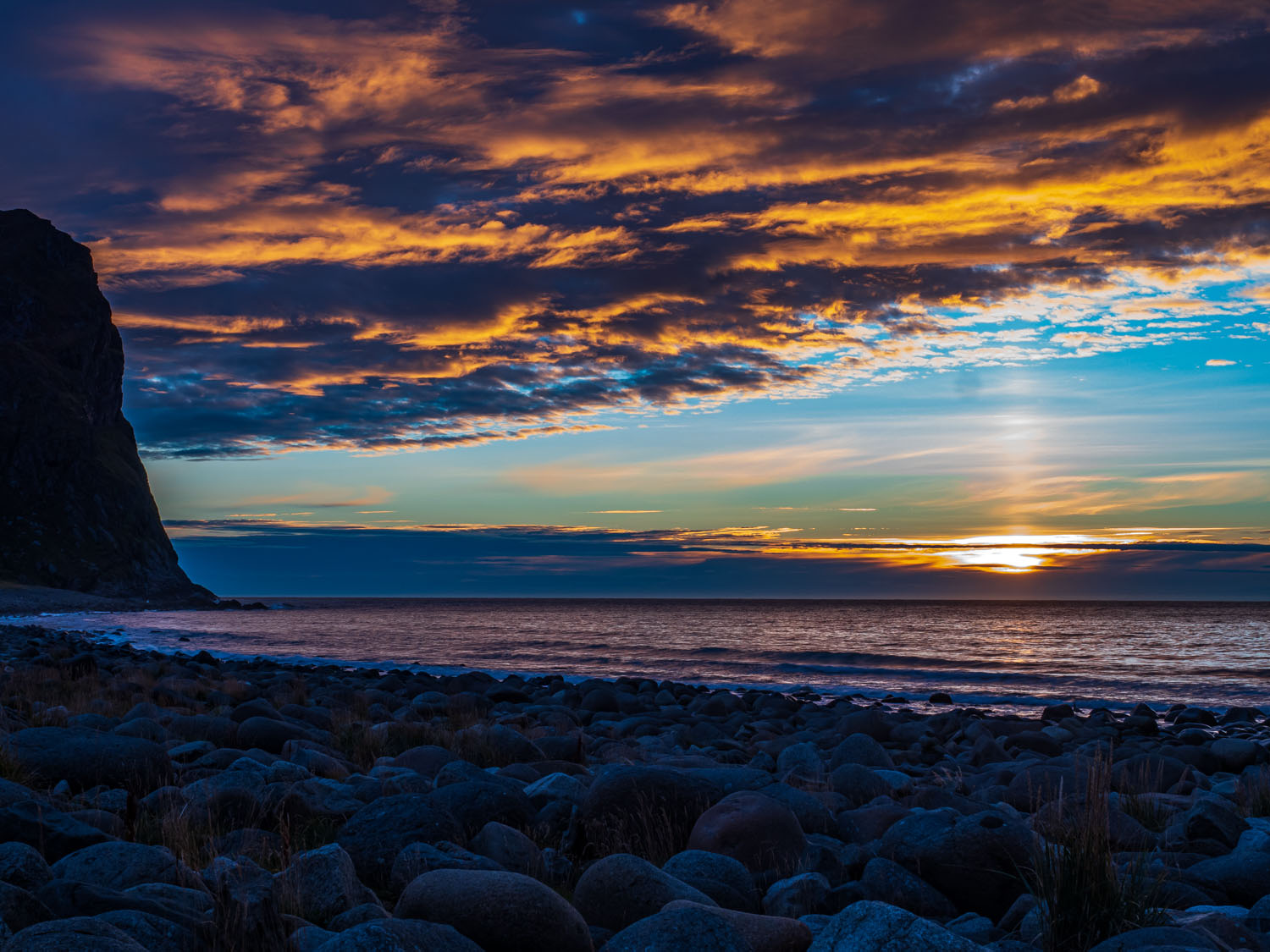


RIGHT: Olympus OM-1 . Olympus M.Zuiko 100-400mmF5.0-6.3 @400mm . F/6.3 . 1/320” . ISO 2000
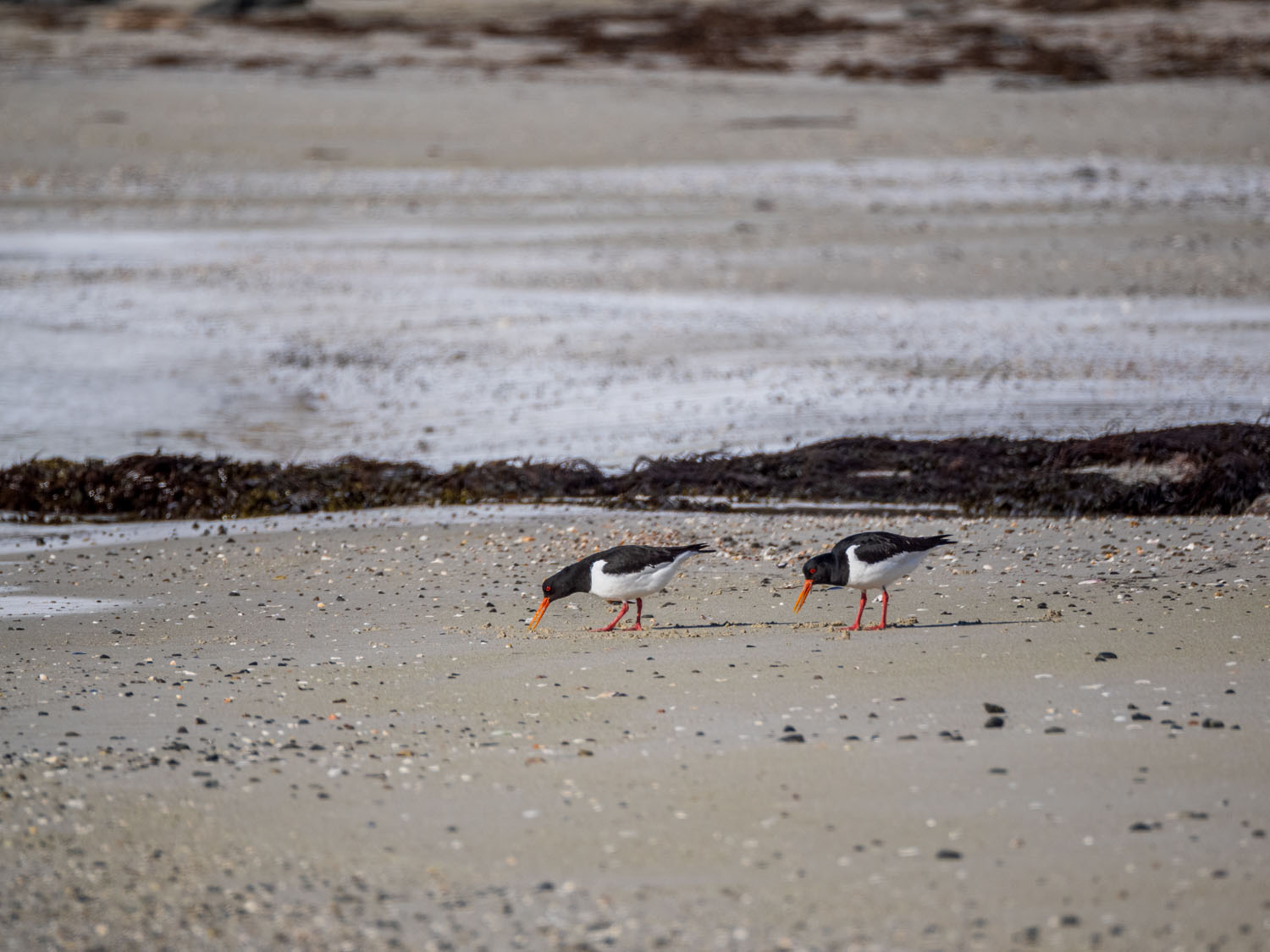
Now, let’s talk a bit about photography. Can you recall when it first sparked your interest? Do you typically bring a camera on your hikes and travels to capture moments?
It was really a long time ago. First, my dad had a Kodak film camera, I don’t even remember the model anymore, and then my uncle got interested in black and white reportage photos of people. In 2009 I bought my first Olympus, the E-520 with kit lenses, so then it started a bit more seriously.
Now I always take a camera (often I take two) with me, on every hike or tent, or I just go with my dog and take one. Then many times the phone stays at home 🙂 A few years ago it was different, because a few-day camping trip with 3 children was a big trip, so luggage sometimes had to be limited, you had to decide what was more important 🙂
I was recently in Poland with my youngest son and it couldn’t have been otherwise without taking my camera!
I believe that a camera is irreplaceable and has a huge advantage over a phone camera, and if I add to this the relatively small dimensions of the camera and lenses, I don’t see a problem with having the equipment always with me. Current technologies make mobile cameras better and better, but the beauty of photography, in my opinion, still is in handling and control over the photo.


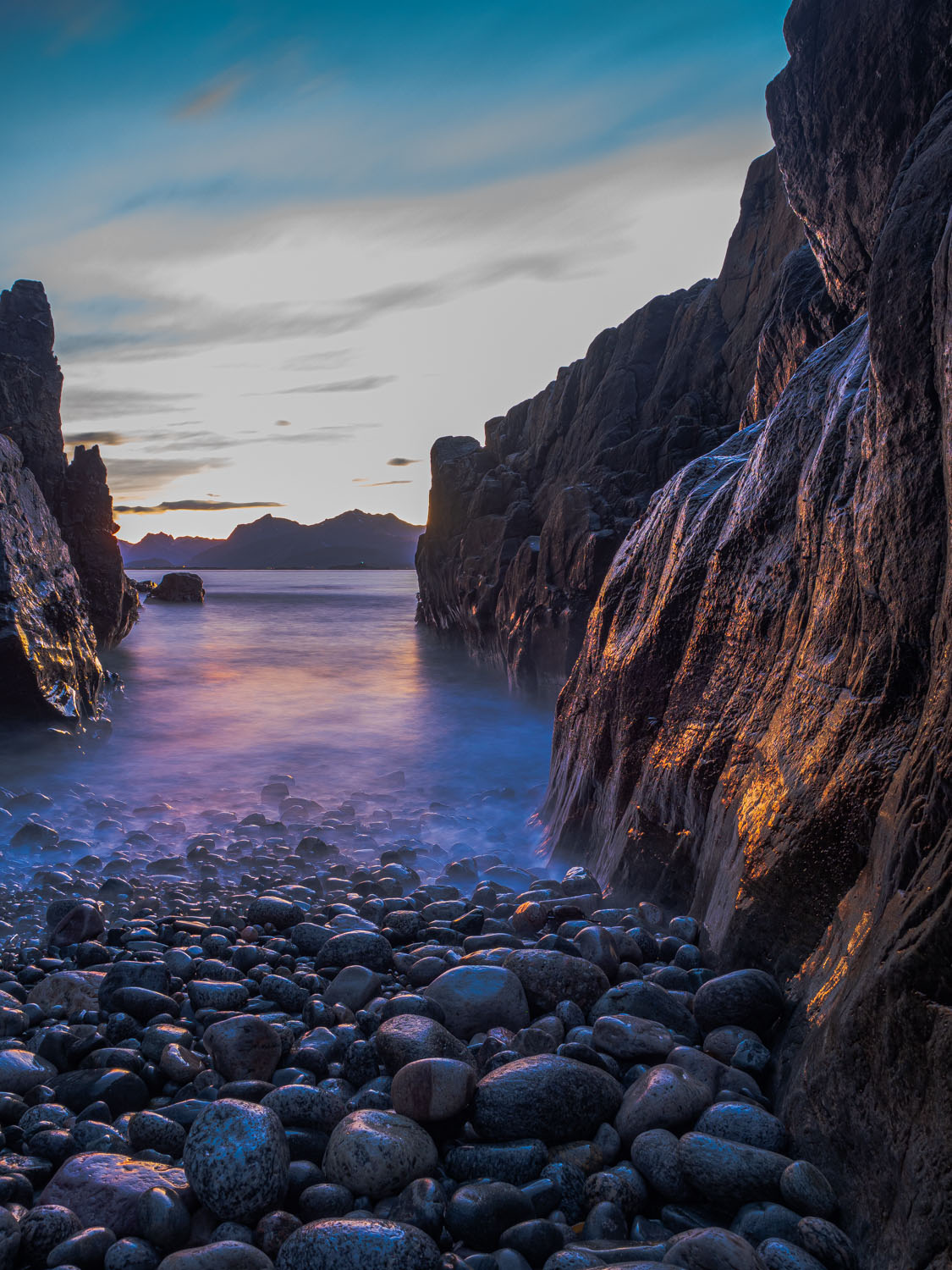
RIGHT: Olympus E-M1 MK II . Olympus M.Zuiko 12-40mmF2.8 @12mm . F/7.1. 20” . ISO 64

Out of all the excellent options available in the market, what specific reasons led you to opt for the Olympus M43 camera system?
I chose the M43 system after much thought and trying full-frame systems (Nikon and Canon). Full-frame cameras are very well constructed, they are professional systems and have many advantages. However, my choice of the M43 system, apart from the image quality, functionality and many features, was caused by the camera’s workmanship, its weight, use in difficult conditions (you know where I live!) and a wide selection of lenses. In my opinion, the lenses are of exceptionally high quality, they are light and very handy for the photographer, and they can also work in difficult conditions, I am talking about those that have been designed for this.
The Olympus M43 system, after my comparisons, has very close-to-reality colour reproduction and dynamic range and a fantastic, precise and very fast AF system. And, of course, IBIS, this is absolutely gorgeous! Few seconds handheld shot, incredible!
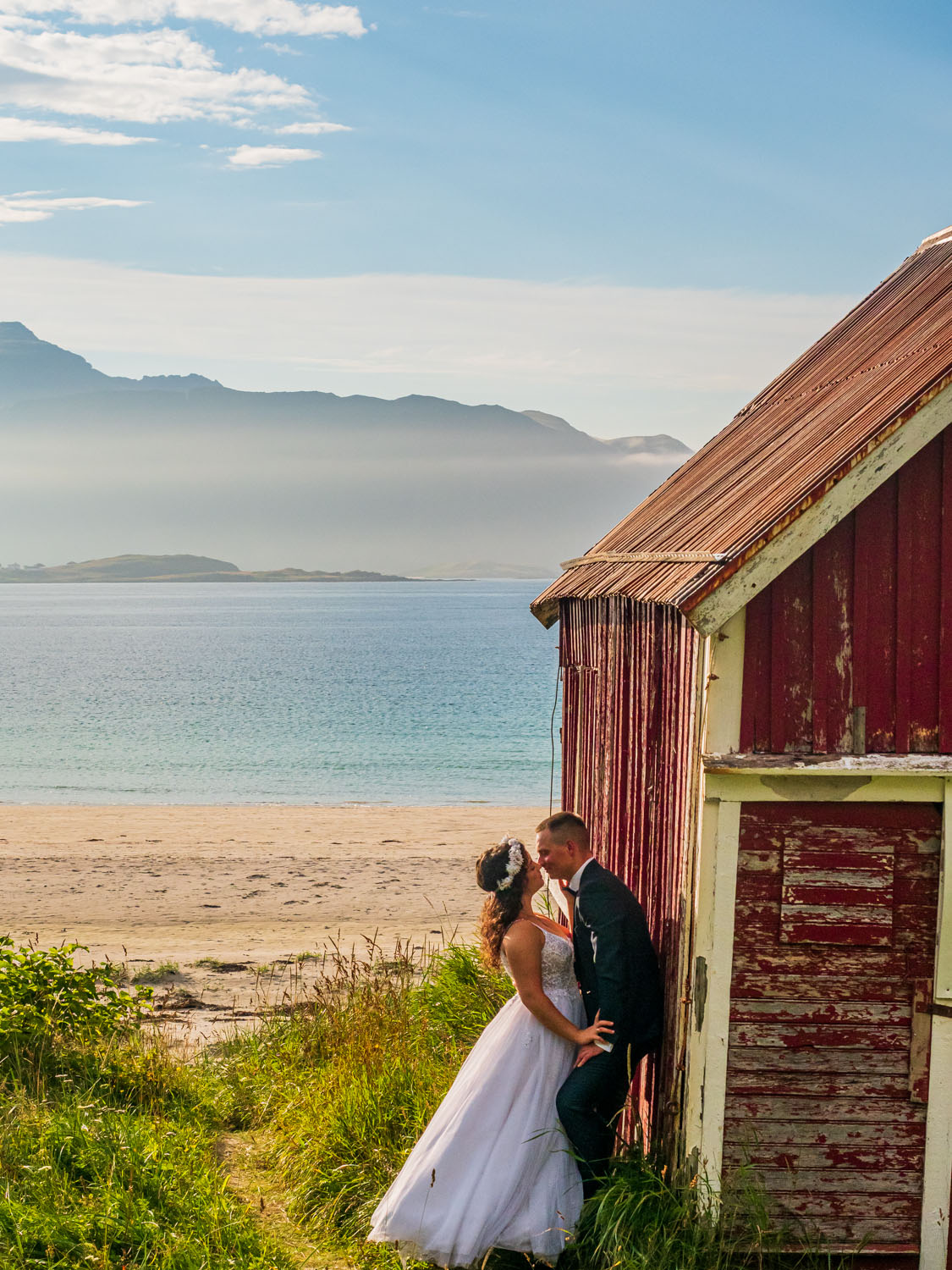
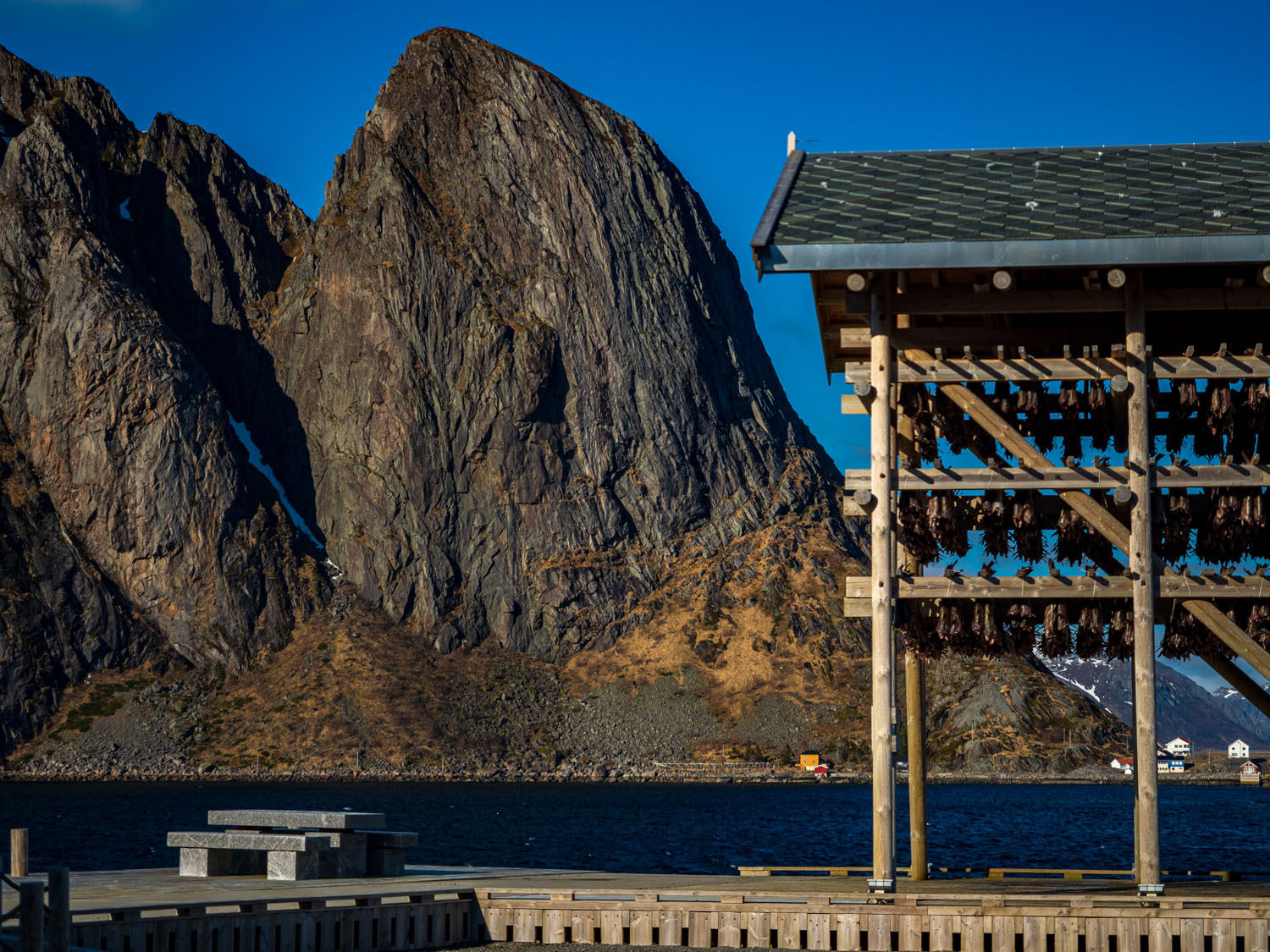
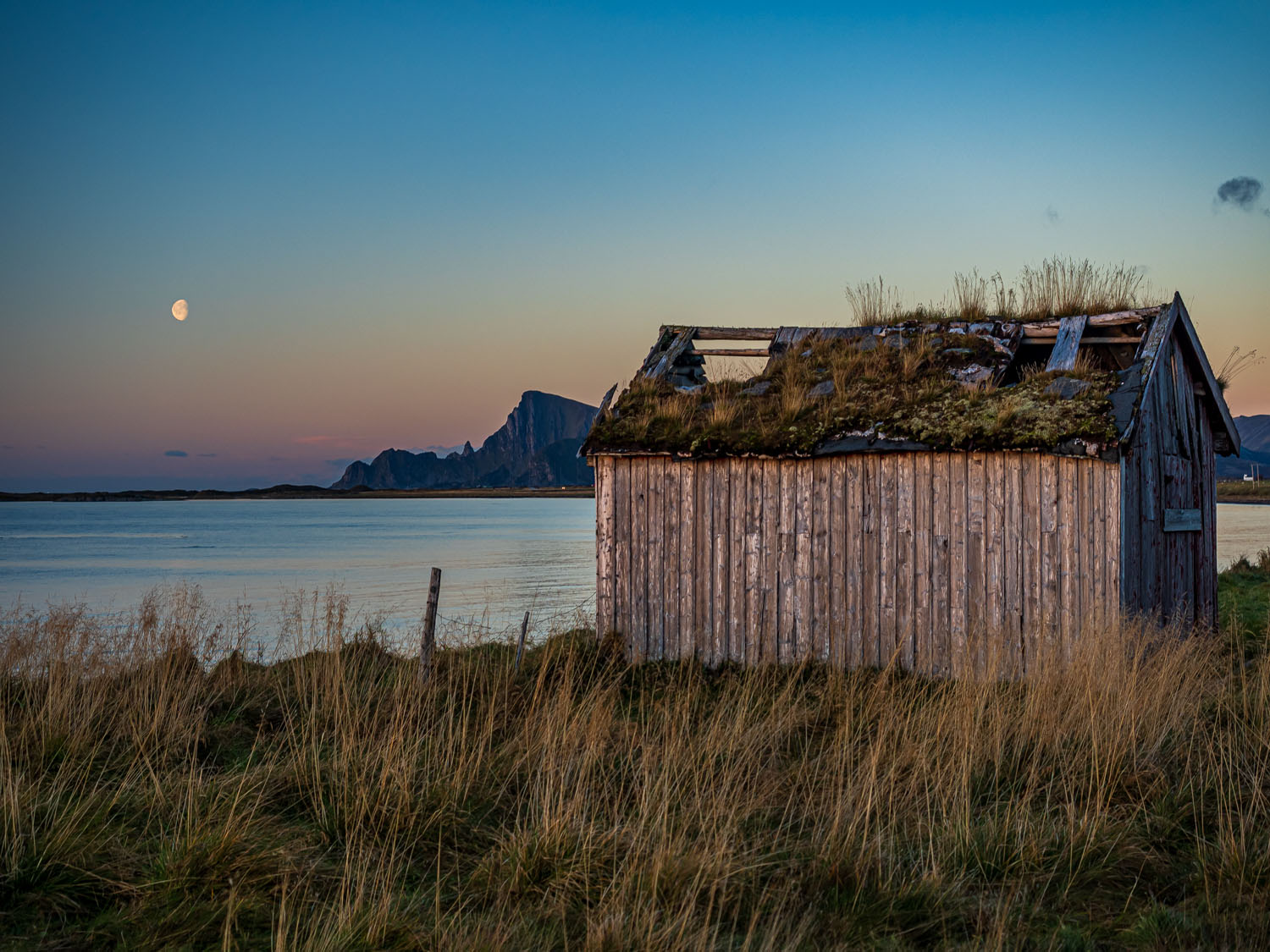
RIGHT: Olympus E-M1 MK II . Olympus M.Zuiko 12-40mmF2.8 @31mm . F/3.5 . 1/80” . ISO 400

I am opposed to discussing the advantage of one system over another, like FF to M43; which is best, so I’d chosen the one that best suited my needs and requirements. My photography includes: landscape (under different weather conditions), night shots, astro, portrait and a bit of wildlife.
Anyways, photography art is depending of us, who’s staying behind the camera, no matter the system. This is old school slogan, but still actual, in my opinion. And the clue is that You MUST master your system.
And right now, I want to feature 2 special persons who helped me to decide – Derek Forss and Robin Wong. Their knowledge, creativity and technical support gave me plenty of information and helped me make my decision. M43 is still alive, I know that, and so much I can I share it with my friends and followers. High five, guys!
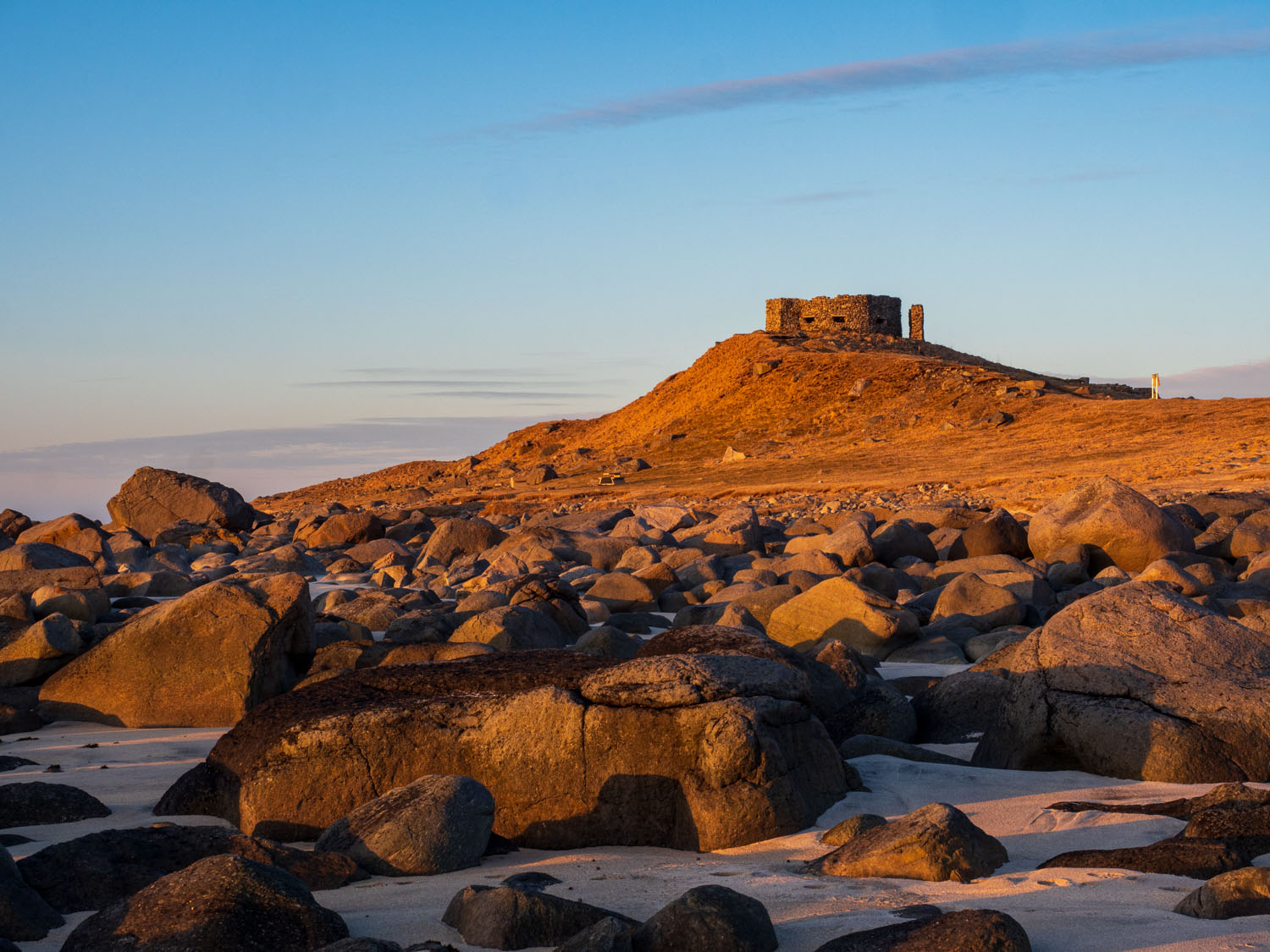


RIGHT: Olympus E-M1 MK II . Olympus M.Zuiko 12-40mmF2.8 @12mm . F/9 . 1/4” . ISO 200

Based on your experience, can you please share the Pros and Cons of using the M43 system for the photography you specialize in?
I would like to start with the disadvantages of the system and cameras, which, like every product, has the right to have. About the type of my photography I’d talked about before. For me, they are:
1. OM Workspace – It’s clumsy and quite archaic to use, lightness of work and responsiveness in Lightroom is incomparably better for me. Workspace often freezes and lags (maybe only in my case?), so the changes are visible after a few moments, the program is also not very intuitive, which can cause problems for new users. Even when I’m using quite fast computers I still have issues with hi-res shots.
2. The native resolution of the photos should be slightly higher, because sometimes you need to make a crop and after doing it, we automatically lose the final quality.
3. Older cameras (E-M1 MkII, E-M1 MkIII) have quite poor sensitivity in low light conditions, this is due to the size of the sensor and I understand it well, but it would be good to avoid raising the ISO for image quality. Both cameras are anyways still very good in my opinion.
4. Price for newest cameras and lenses (PRO) – I think it is absolutely too high and some users with great potential have to give up buying because of the price.
5. Unintuitive menu that makes work difficult (E-M1 MkII, E-M1 MkIII). Sometimes, after so many years, I still look for functions hidden in various menu tabs.
6. Menu button on the left side (OM-1), a small thing, but definitely wrong for me 🙂 Really unuseful.
Advantages:
1. IBIS – Absolutely phenomenal, works perfectly in older and newer cameras. Combined with IS lenses, it’s even better. The OM-1 is even more powerful and helpful. I often use a tripod, but it happened to me to shoot for several seconds handheld without losing focus and sharpness!
2. AF+CF – Fast and accurate, even my E-M1 M2kII is doing great to this day.
3. The dimensions of the equipment – they are very handy and light compared to the competition – you do not feel tired in the field even after a few hours with two cameras and a whole set of lenses. Of all the cameras I have used, the Olympus has the best and most secure hand grip, which is also extremely important during long work.
4. Sequential modes and electronic shutter – They are very responsive and extremely fast, they are perfect for my photography, and the silent mode does not produce unnecessary sounds and does not distract.
5. Working in low temperatures and splash resistance – Lofoten is a place where it can start raining in a few minutes, and then I just have to wipe the lens and keep shooting. The lowest temperature is -23ºC with wind and OM-1 just does work. I confirm – it works! Shorter, but still.
6. Zoom – Twice as much zoom in FF equivalent, and the weight of the lenses is far ahead of the competition.
7. Starry sky – I love this feature because I often shoot at night (except polar day). It has not let me down even once, and during the northern lights, I do not have to set focus several times, very accurately.
8. Colours and dynamic range – I like the colour reproduction and dynamic range in the Olympus system. I think they are correct and suitable for my work.
9. Lenses are very light and produce great image quality, give sharp photos and are really bright.
10. ND live filters (for OM-1) incredibly useful tool which I just love and make for me a plenty of magic and moody frames
Few of both adv and disadv left, but we can talk about them maybe next time 🙂
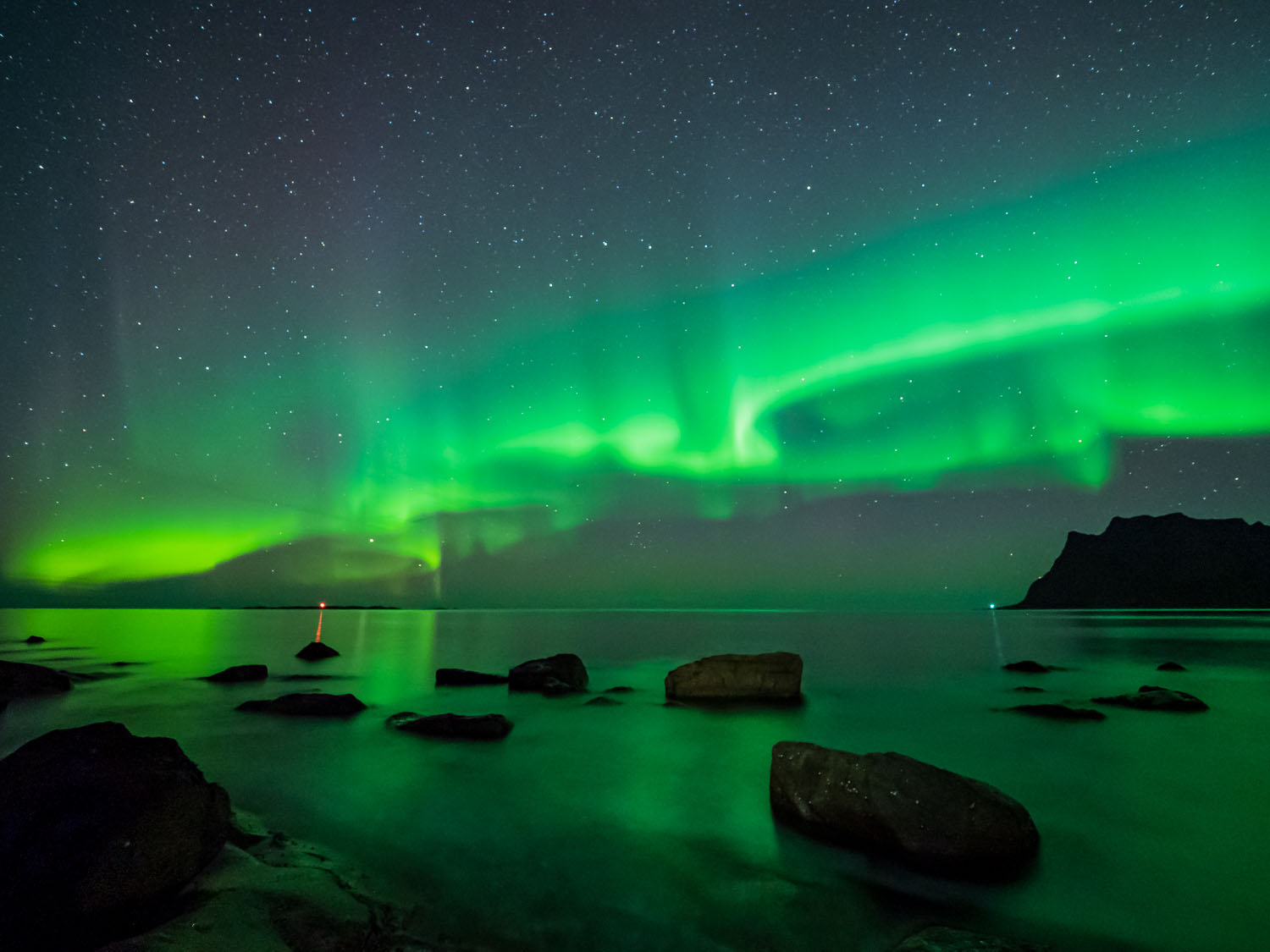


RIGHT: Olympus E-M1 MK II . Olympus M.Zuiko 12-40mmF2.8 @12mm . F/2.8 . 10” . ISO 1000
What cameras and lenses do you currently use, and what’s your overall opinion on your latest acquisition, the OM System OM-1?
I have the following cameras and lenses:
Cameras:
● OM-1
● OM-D E-M1 Mark II
● OM-D E-M10 Mark III, with kit lenses, 14-42mm + 40-150mm
● E-520 with kit lenses, 14-42mm + 40-150mm (not using this set at this time)
Lenses:
● M.Zuiko 7-14mm F2.8 PRO
● M.Zuiko 12-40mm F2.8 PRO
● M.Zuiko 25mm F1.8
● M.Zuiko 45mm F1.8
● M.Zuiko 100-400mm, F5.0-6.3

My dream set is still missing the following: Oly 40-150 F2.8, Oly 25mm F1.2 PRO, Oly 75mm F1.8 and 150-400 F4. (The latter remains in the realm of dreams due to the price 🙂
I hope to buy the rest soon.
I decided to buy the OM-1 after a long thought and seeing many reviews. I have never regretted buying this camera, but I think its price is too high even compared to the features it offers. UPS 🙂 I wanted to go a step further in my photography and because of the place where I live, I decided to combine my passion with work, which I will tell you about in a moment.
The potential of the camera is huge, some of the advantages I mentioned in the previous point, I will add Pro Capture, an even faster processor than its predecessors, better performance in low light, a new Menu, which is finally clear and logical, and very good video functions. I don’t know if I can call myself a professional, but the choice of a camera is for years and despite the fact that my old E-M1 MkII still works flawlessly, the OM-1 is definitely better in all conditions. It works fast, the battery works all day, recently I took almost a thousand photos and recorded several minutes of video. Really. AF Limiter, selection of objects and C-AF and AF-ON button – just to add to the undoubted advantages.
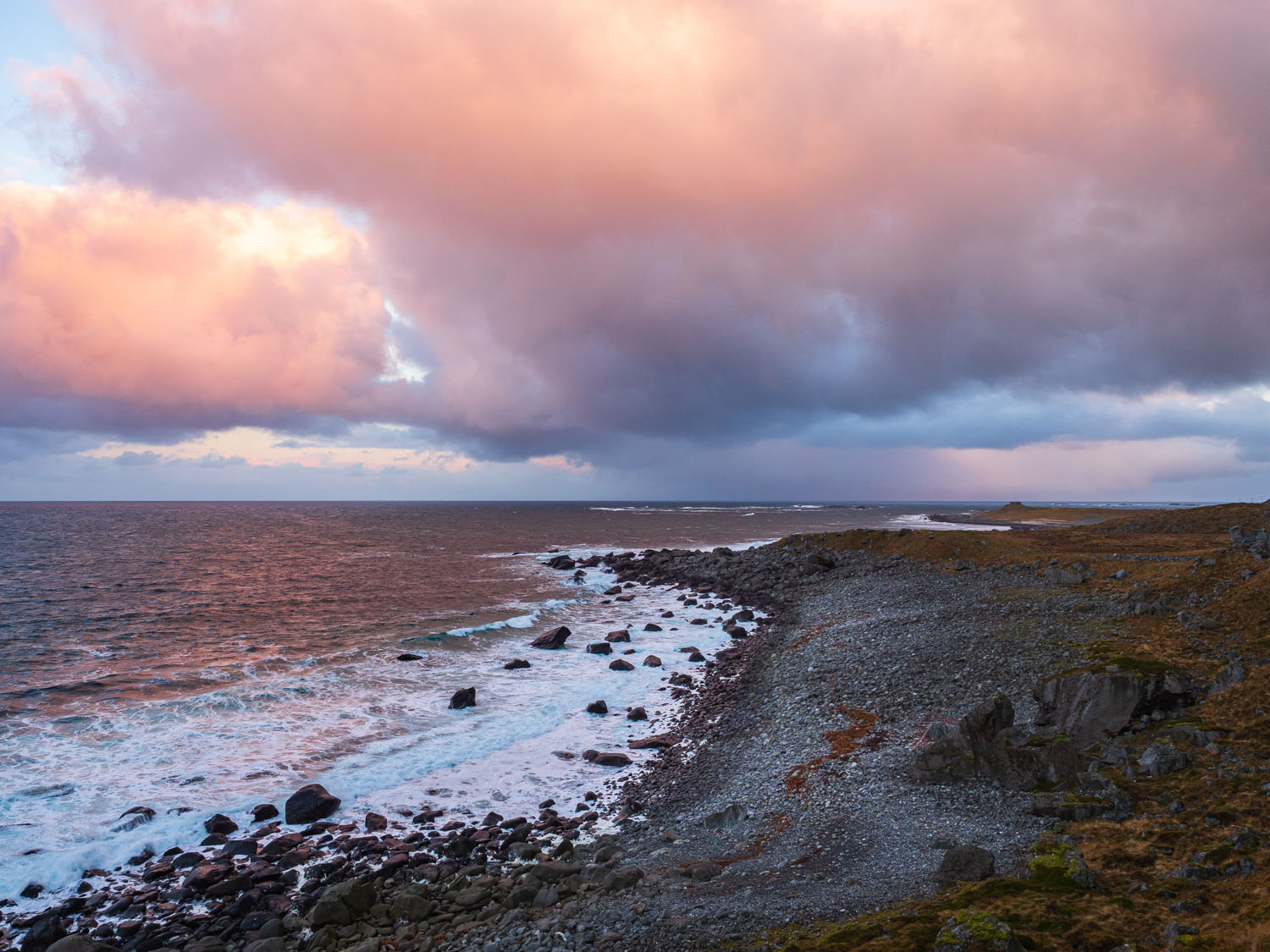
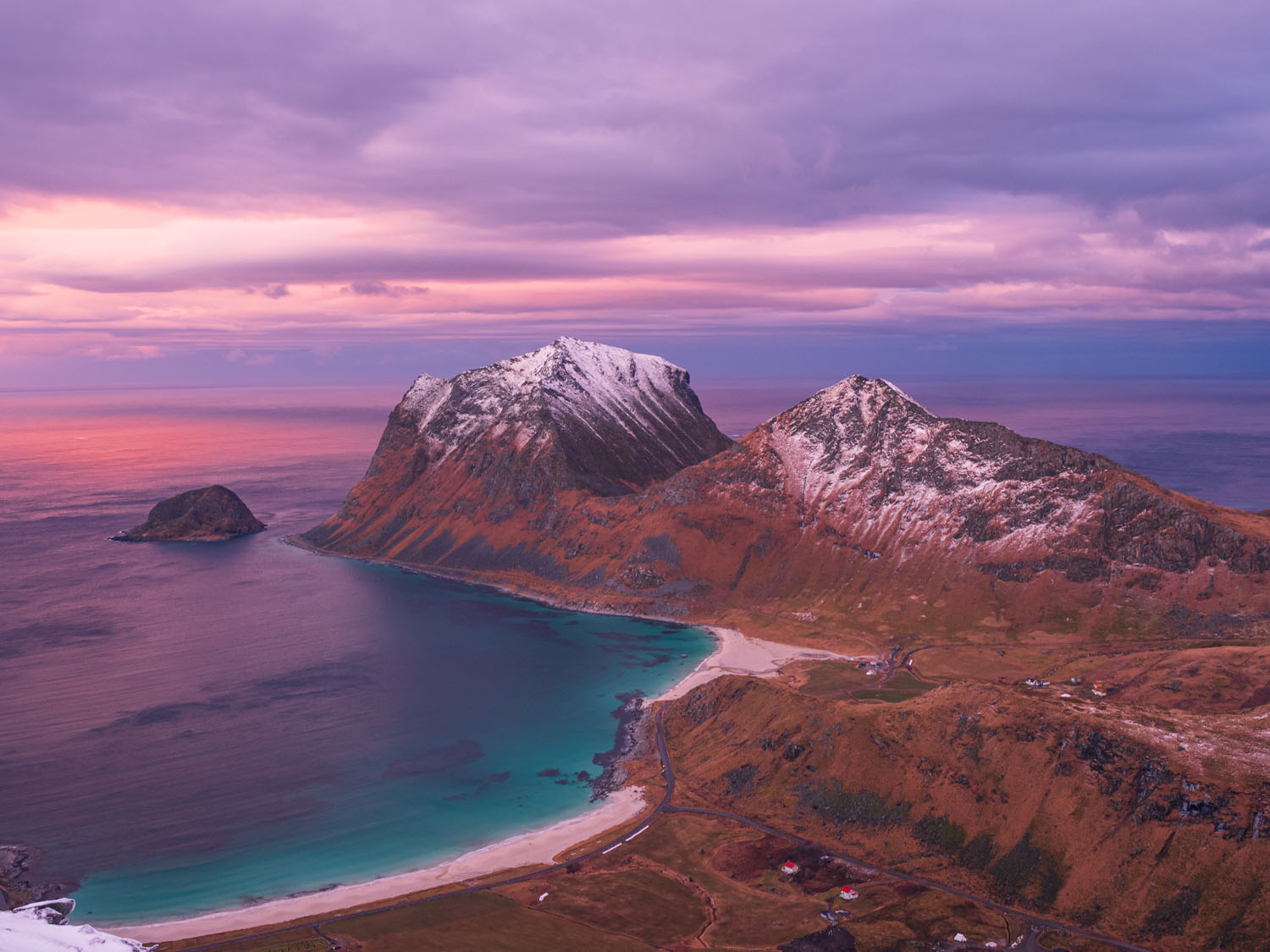
By the way, since you moved to Lofoten, what do you do for a living?
For many years I worked in the construction industry, where I supervised projects in the field of work safety and production quality, then I managed them and it was too hard to reconcile hobby with work due to lack of time. When we moved to Lofoten, I decided to take photography more seriously, I started with people in the photo industry, I was sharing and posting my landscape photos in various places, then a wedding shoot and I wanted to try something more because I discovered that someone likes my art. This is how the idea of photographic expeditions to Lofoten – “Lofoten Luminance” was born. I’m just starting this project, which includes exploration of the archipelago with people related to photography, joint visits to spots and interesting places on the islands known in social media and more. I want to show the beautiful Autumn, cold and dramatic Winter, and of course, enjoy with Northern lights spectacles. An exclusive rorbu awaits us in a beautiful place and centrally located in Lofoten. Anyone interested is welcome and I will try to introduce them to the magical world of photography, discussing, share my knowledge and help in building compositions and editing, and show them the wonders of nature that I have every day. The long-term plan also includes more remote locations in northern Norway. Also, if I can advertise here, I invite you with all my heart to contact me and-or cooperate 🙂
Via Instagram or my new site www.lofotenluminance.com

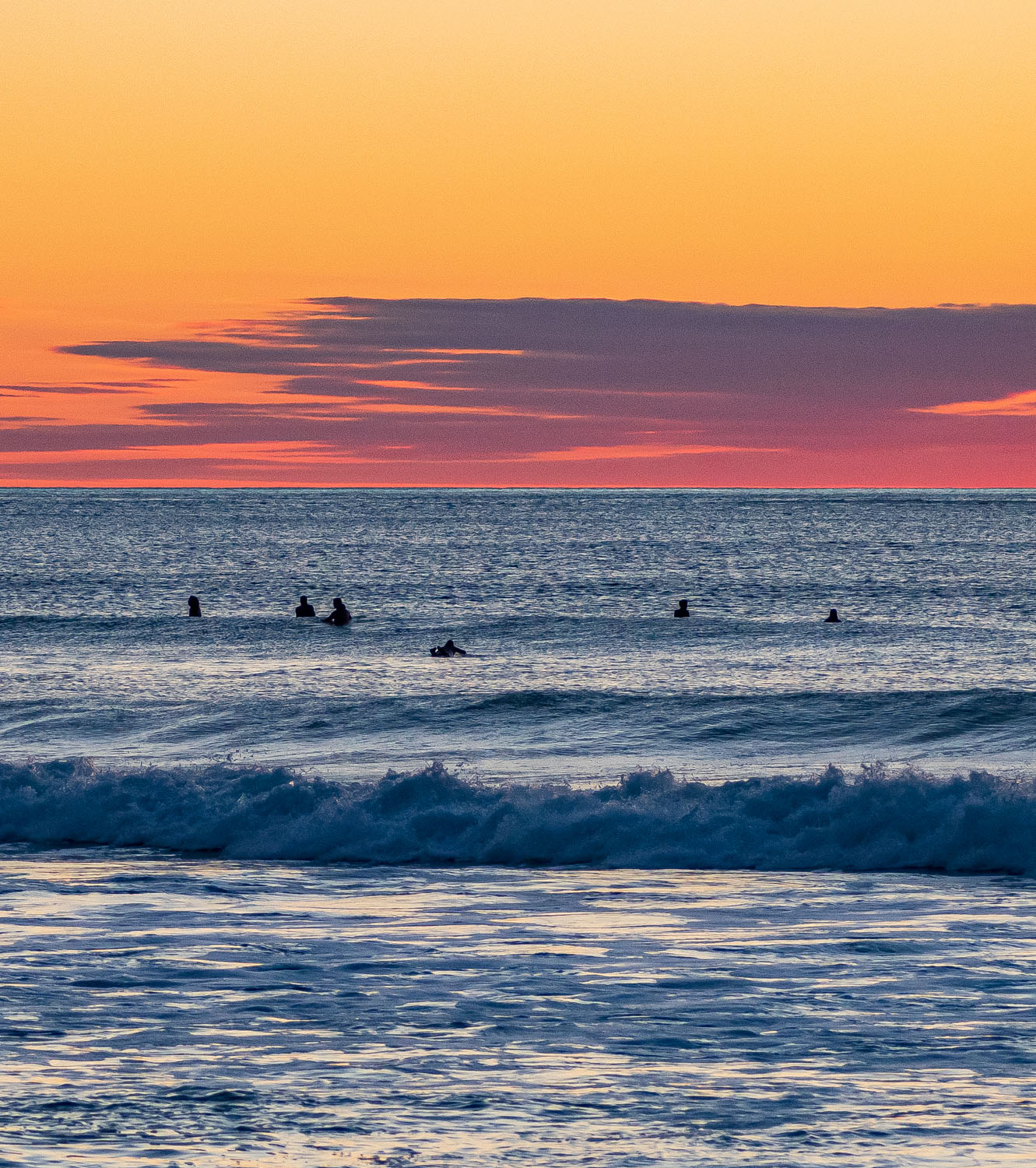
RIGHT: Olympus E-M1 MK II . Olympus M.Zuiko 100-400mmF5.0-6.3 @100mm . F/5.0 . 1/1000” . ISO 2000
Among all the Olympus photographers, which are your favourites, the ones whose work you follow the most closely?
Like all of us, I have my favourite photographers and mentors who make and produce real – in my opinion – art. So you see, that not only landscape photographers are interesting to me 🙂 Experience, knowledge and photography style are very important criteria for me to choose them:
● Derek Forss (for explaining how to build a composition and landscapes which «live» on his photographs)
● Matt Horspool
● Peter Baumgarten
● Chris Eyre-Walker
● Espen Helland (I’m a wildlife fan!)
● Egoitz Icaza
What other items do you typically bring in your backpack for 1-day hikes, aside from your camera and lenses?
There MUST be plaster, bandage and water in the backpack. Light snacks to eat, some fruits and often chocolate for energy 🙂 The map works on the phone, but I make sure I know the route and where I will be moving. I ALWAYS check the weather, YR.no – is a live-view weather app. Light rain jacket, just in case, hat and jacket if necessary. I take a tripod with me if I plan long exposure times and mount an L-bracket on my camera, wipes and lens cleaner. If the weather can get bad, I take a light wool T-shirt. Sometimes I take a Primus coffee set with me to stay somewhere for a while, then I also take a packed lunch or noodles. I need the strength to go back! The trails in Lofoten are poorly marked, so it is VERY important to stick to the trails so as not to lose the route and not to destroy nature, because each of us has a duty to respect it. That’s why all the stuff and garbage that I take home ends up in my backpack. Unnecessary electronics stay at home, because I go to the mountains to be free, feel the wind in my hair and show you my beloved Lofoten.
Voila!

Before we wrap up, could you share what software you utilize for processing your image files? Additionally, would you mind giving us a quick rundown of your post-processing workflow?
When it comes to my workflow, I always try to keep editing to a minimum. Most often I try to choose the white balance to match reality as much as possible, because WB Auto is not always optimal. A good example is photographing the Northern Lights, because in the dark, the camera will not pick up the colour of the sun’s dust, and you have just to do it from memory as I observed it. I am careful with saturation and often try to raise the shadows, but in such a way as not to lose the quality of the photo. Noise reduction, thanks to the OM-1, is not difficult, because the camera produces surprisingly little noise, even within ISO6400 and more, depending, of course, on the composition, subject, frame, etc. I check the exposure on a regular basis and try to maintain it optimally, depending on the conditions in the field. Sometimes I adjust textures, for example, to show mountain massifs, and add a little vignetting to add drama.

For wedding shots, I used foggy presets or edited them as black and white. From time to time, I use a linear gradient to balance and reduce the highlights from the sky because, very often strong Sun gives too many reflections and light from up to the downside.
Sometimes also I click AUTO and check how the algorithm selects the sliders, and then I can correct them myself. I believe that too many changes in editing can sometimes ruin a photo, and the most important thing, in my opinion, is for the recipient to see the world through my eyes.
Thank You for the interview, and see You in Lofoten!
Social media:
Instagram: @robertandrelczykphotography
Facebook: Robert Andrelczyk Photography
Website: http://www.lofotenluminance.com/
Our family blog:
Instagram: @Pyzywnorwegii
Website: https://pyzywnorwegii.com/
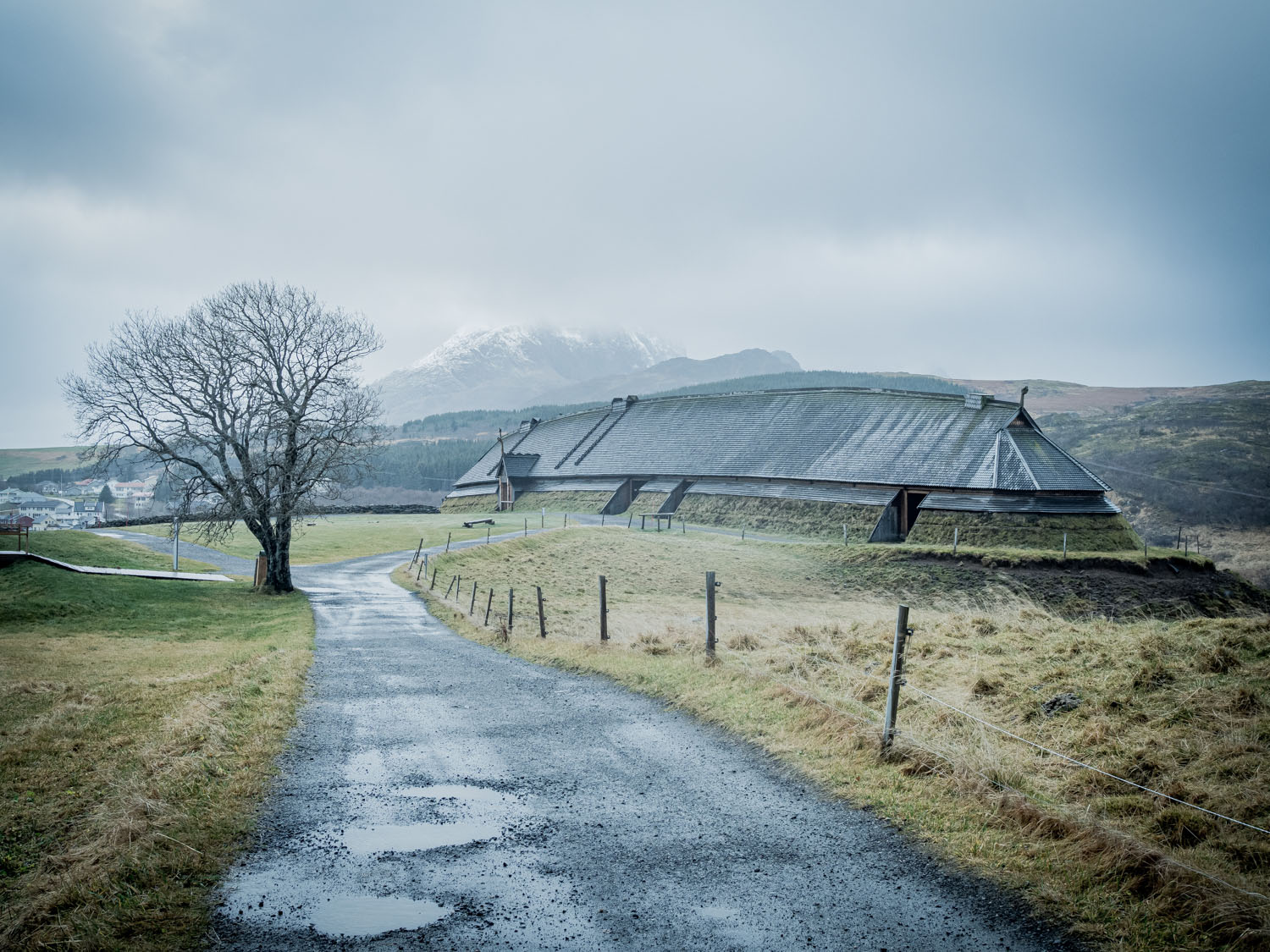
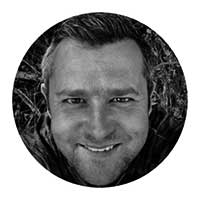
“My name is Robert Andrelczyk, I am a little over 40 years old, I was born in Poland and have been living in Norway for 16 years. I have a wife, three sons, a dog, a cat, a dozen hens, and a few ducks (yes, you read that correctly!). I worked as a project manager in one of Norway’s largest construction companies, and my wife is a teacher.”





Alexander Ratushev
October 7, 2023 @ 17:27
Dear Robert, good story and great photo!
Thanks!